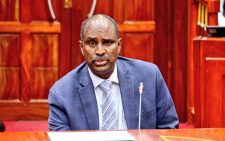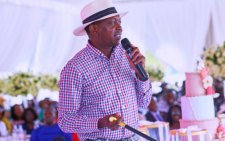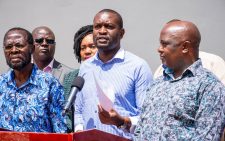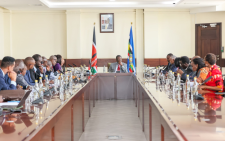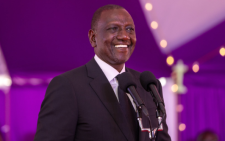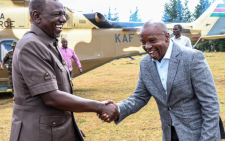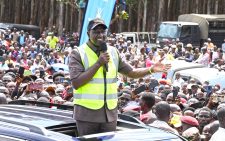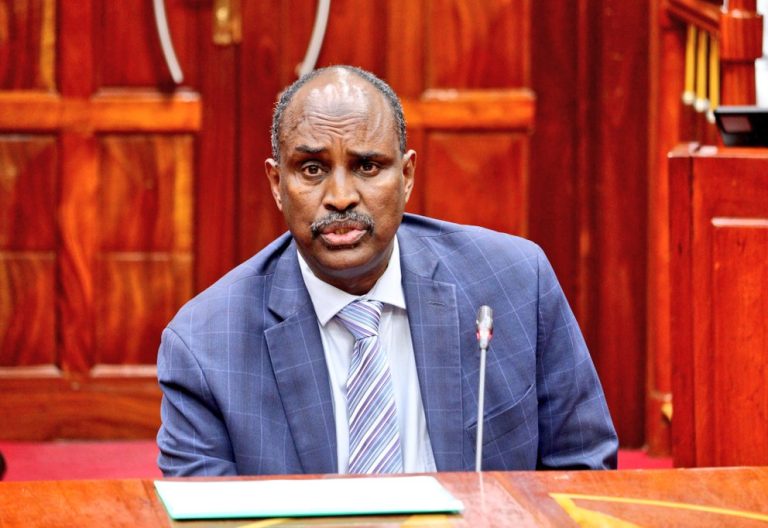Special day revives the 1963 freedom legacy
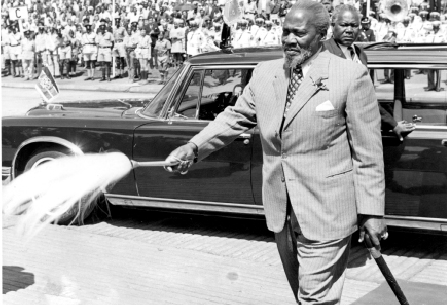
When President Uhuru Kenyatta presides over Madaraka Day celebrations – one year before the 60th anniversary of this auspicious occasion in Kenya’s history – Kenyans will be deeply reflecting on his legacy after 10 years in State House.
Today’s is the last public State function at which President Uhuru will address the nation since the forthcoming General Election will usher in a new leadership.
An important public holiday in the national calendar, Madaraka Day holds great significance for Kenyans.
That is why the nation is eagerly looking forward to his speech as he comes close to the end of his two terms as Head of State. But first, a recollection of the genesis of this great national day for the generations not born around these momentous times.
Madaraka means power in Kiswahili and commemorates the day in 1963 when Kenya attained internal self-rule from British colonialisers. Full independence came on December 12, 1963 and exactly one year later Kenya adopted a republican form of government.
Internal affairs
Taking control of its internal affairs after colonial subjugation, the new leadership offered unbridled hope to Kenyans bristling with the euphoria of independence, power and prospects of prosperity.
Freedom fighters who gallantly engaged in protracted physical and constitutional battles for independence and power summed up national aspirations in a simple phrase that resonated with wananchi, “freedom from disease, poverty and ignorance.”
The government at independence and after, with all vested powers, was expected to implement policies ensuring good health, education and economic growth for the citizens while upholding democracy, justice and human rights. Nearly 60 years later, we are yet to realise these goals. True, the respective administrations have made notable strides in the economic and social spheres, but the political environment remains convoluted, and national cohesion is still elusive.
Despite elements of progress, our nation reels from the hangover of failure to harness the priceless gift of independence and power into a fountain of stability, not a crucible of strife and corruption.
As President Uhuru addresses the nation on the 59th Madaraka Day today, it seems as if we have been thrown back to the post-independence era. The same ills that the founders of our nation pledged to curb still confront us, some with even greater intensity.
Tellingly, they are the central subjects of the raging debate dominating campaigns in the fiercely contested presidential election battle, with the leading contenders promising voters the prescription to cure the ailments that continue to afflict citizens.
While the power struggle of yore pitted freedom fighters against colonialists, today’s intense internal Madaraka struggle involves the descendants of those the colonialists bequeathed power to and their latter-day compatriots-cum-protagonists.
President Kenyatta has ploughed back into the historic political narrative that endures from independence to this day. He has endorsed Raila Odinga, the son of Jaramogi Oginga Odinga who famously declined the colonialists’ offer to take over leadership in favour of his father Mzee Jomo Kenyatta, the first president, who appointed him vice-president.
While President Kenyatta will likely highlight the significant development achievements of his leadership this Madaraka Day, Kenyans will be acutely aware too that the country has witnessed unprecedented levels of public debt, corruption, hopelessness, ethnicity, nepotism, unemployment, and abject poverty.
The political realm has become extremely toxic. Unending seasons of power struggles dating back to the first Madaraka Day are replaying. Trapped in a web of political deceit, wananchi are in a state of despair, reeling from an economy battered by among other woes, the coronavirus pandemic.
They are still crying for “freedom from disease, poverty and ignorance” that the valiant nationalists trumpeted at independence. They remain sceptical of the competing political elite rebooting the national system and making a clean break from the pathetic past.
While the pursuit of elusive political, electoral, and social justice remains paramount, leadership must get back to the basics and strengthen the Constitution to consolidate justice, human rights, and the economic benefits it has so far successfully engendered through devolution.
More than half of county governments over-rely on agriculture (the backbone of the economy) in revenue collection yet do very little to uplift the sector and support farmers. Kenyans expect President Kenyatta to address this factor in his Madaraka Day speech.
It is high time the government implemented the Maputo and Malabo Declarations adopted by African heads of state and government at the African Union (AU) Assembly 17 years ago, committing several ambitious decisions regarding agriculture. The most prominent one was the “commitment to allocate at least 10 per cent of national budgetary resources to agriculture and rural development policy implementation.”
The aim is to achieve agricultural growth rates of more than 6 per cent as a means of promoting food security and economic development. Nearly 20 years later, this commitment is far from being realised and the 10 per cent pledge remains unfulfilled.
The national government should heed the Parliamentary Budget Office’s flagging of the Treasury for failing to adequately fund President Uhuru Kenyatta’s legacy Big Four agenda, allocating it a small fraction of the trillion-shilling Budget.
‘Big Four’ offers an opportunity to counter the ‘hustler’ narrative taking root among millions of restless unemployed youths hyped in 2022 electoral succession politics.
The agriculture pillar in the agenda can quickly create jobs and food security. It is also a key plank of the UN Decade on Ecosystem restoration for forests, farmland and the blue economy that can vastly transform citizens’ fortunes.
National cohesion
On matters of national cohesion and reconciliation, President Kenyatta may also revisit the outlawed Building Bridges Initiative (BBI) which sparked sharp differences across the political divide.
The salient face of the anti-BBI brigade was his estranged Deputy President William Ruto, who called the court ruling a victory for citizens and the rule of law. He now also admits that some aspects of the initiative stood to benefit even its most dogmatic opponents who viewed it from the prism of settling political scores with their adversaries who initiated it.
The BBI’s greatest flaw that dealt it a fatal blow in court was that it was a mega-constitutional bill containing 74 amendment articles that sought to transform the Constitution.
These amendments would have affected almost the entire “basic structure,” the letter and spirit of the Constitution, amounting to its dismemberment and an unacceptable evolution, contrary to its basic tenets sacred to the people.
In the heated presidential contest, the BBI initiators can learn from the errors in tampering with the constitutional order and champion the low-hanging fruits such as strengthening national cohesion and devolution.
Consideration should be given to increasing national revenue allocation to counties to 35 per cent, harnessing devolved functions of governance through the Big Four agenda and youth empowerment through economic incentives and job creation.
Finally, as he edges to the exit of the tumultuous political and economic scenario of his presidency, President Kenyatta is credited with the significant infrastructure growth seen throughout the country, although hampered by the whiff of corruption, spiralling costs, and the unforeseen impact of Covid-19.
The writer is a veteran journalist who comments on political and justice affairs.
